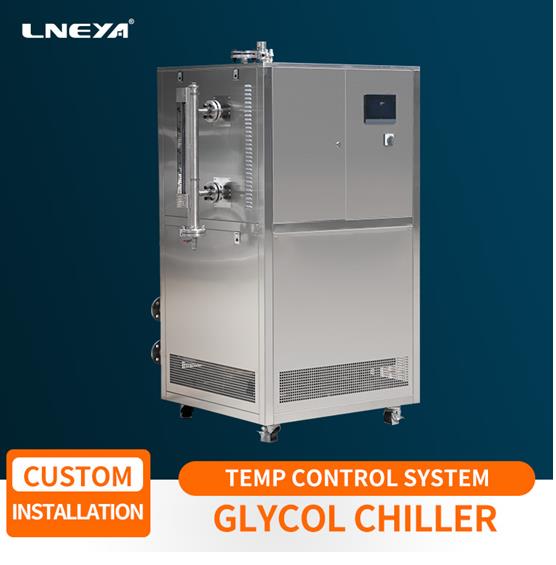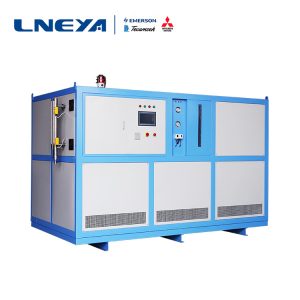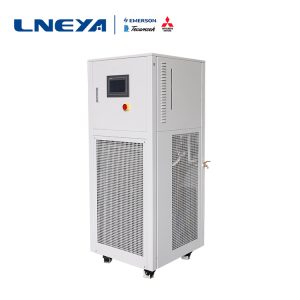Temperaturbeschreibung der Glykol-Kühlmaschine
For users and friends, it is necessary to
have a deep understanding of glycol chillers before use. It is recommended to
know the temperature in various equipment such as refrigeration system,
evaporating temperature, condensing temperature, etc.
If the refrigeration system of the glycol
chiller can operate safely, three points need to be paid attention to:
1. The pressure of the refrigerant in the
refrigeration system needs to be observed at any time to avoid abnormal high
pressure, so as to avoid rupture;
2. The phenomenon of damp heat stroke and
liquid shock shall not occur and occur, so as to avoid damage;
3. Pay attention to timely maintenance of
each component, so as to avoid component defects and cause malfunction of the
glycol chiller.
The evaporation temperature of a glycol
chiller refers to the temperature at which the refrigerant in the evaporator
inside the unit boils and vaporizes under a fixed pressure. The condensing
temperature is the gas refrigerant in the condenser of the unit, and the
temperature at which it condenses into a liquid under a certain pressure is
called the condensing temperature. The recooling (or subcooling) temperature
refers to the temperature at which the condensed liquid refrigerant is cooled
to below the condensing temperature under the condensing pressure, which is
called the recooling temperature (or subcooling temperature). The intermediate
temperature of the glycol chiller refers to the two-stage compression system.
The saturation temperature of the refrigerant in the intercooler at the
intermediate pressure is called the intermediate temperature.
In fact, the temperature description of the
glycol chiller is quite a lot. So how to detect the suction temperature and
discharge temperature of the glycol chiller compressor after knowing these
temperatures? The suction temperature of the compressor can be measured from
the thermometer in front of the suction valve of the compressor. The suction
temperature is generally higher than the evaporating temperature, and the difference
depends on the length of the return pipe and the insulation of the pipe.
Generally, it should be 5-10 higher than the evaporating temperature. The
superheat can be adjusted by changing the liquid supply; The air temperature
can be measured from a thermometer on the exhaust pipe. The exhaust temperature
of a glycol chiller is directly proportional to the (suction and exhaust)
pressure ratio and the suction temperature. The higher the suction superheat
and the higher the pressure ratio, the higher the exhaust temperature,
otherwise the opposite. Generally, the exhaust pressure is slightly higher than
the condensing pressure.
Therefore, in order to better run the
glycol chiller, users still need to understand it. If you don’t
understand, you can contact us at sales@cnzlh.com. LNEYA is a chiller
manufacturer.
Verwandte Empfehlungen
-
Beschreibung der Einschaltauslösung des Hochleistungskühlschranks
1417Der Wuxi Guanya LNEYA Hochleistungskühlschrank ist mit Markenzubehör ausgestattet. Die Kühlleistung des gesamten Hochleistungskühlschranks ist relativ stabil. Sobald die Power-On-Auslösung auftritt, muss sie rechtzeitig verarbeitet werden, um die...
Details anzeigen -
Glycol chiller installation requirements
1751In the summer, the use of glycol chillers is relatively frequent. Efficient glycol chillers are also needed. Therefore, when installing glycol chillers, they need to be installed on a smooth and tidy floor. Why choose a smooth ground when installi...
Details anzeigen -
Explosionsgeschützter Kühlschrank - geeignet für mechanische Produktionsanlagen
2197LNEYA Explosion Proof Refrigerator is a kind of special refrigerator mainly used for the special industrial environment to keep dangerous goods which are difficult to preserve, volatile and inflammable and explosive. With the development of petrol...
Details anzeigen -
Überlegungen zur Auswahl eines Temperaturregelungssystems für die Destillation
2004Das Lneya Destillationssystem-Temperiersystem ist ein selbst entwickeltes Kälte-Heizungs-Temperiersystem für die Destillationsindustrie, das in der Destillationsindustrie sehr begehrt ist. Was also sollte...
Details anzeigen
 LNEYA Industriekühler Hersteller Lieferant
LNEYA Industriekühler Hersteller Lieferant















